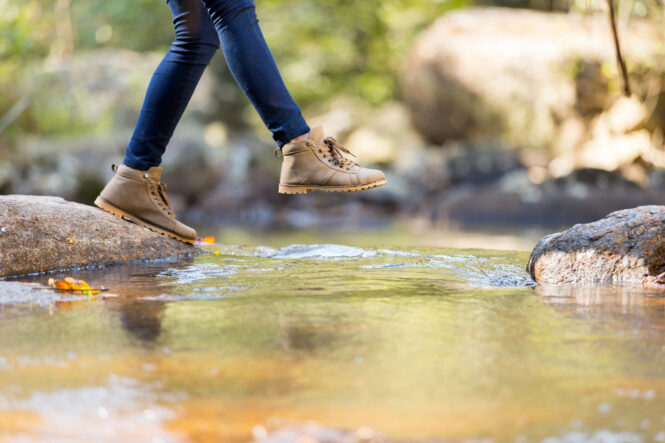In 2021 alone, 58.7 million people went hiking in the U.S. – and it’s safe to say that if you’re reading this, you were one of them. Over the last few years, due in part to the COVID-19 pandemic, outdoor activities like hiking have steadily been on the rise and it’s easy to see why. Hiking comes with fresh air, beautiful views, and many physical benefits. Going on regular hikes will not only satisfy the explorer in you but can also help strengthen your muscles and bones, improve your balance and cardiac health, and can even decrease your risk of developing respiratory disease.
However, for those living with osteoarthritis or joint pain, hiking may not seem like the best way to reduce pain and inflammation. It’s true that it is extra important to be careful and aware of your surroundings on a hike regardless of joint pain. For example, hiking on uneven ground can cause slips, falls, and injuries to the ankle, foot, knee, and other joints. But even people with osteoarthritis can enjoy this rejuvenating outdoor activity.

To keep you on the trails and out of pain, here are a few tips to keep in mind while hiking.
- Wear Proper Footwear: Buying a pair of shoes just for hiking may seem extreme, but wearing supportive shoes and socks before hitting the trails can make all the difference. Supportive hiking boots will provide more stability for your ankles if you encounter rough terrain. Also, make sure you pair your boots with padded or moisture wicking hiking socks to keep your feet cushioned, insulated, and sweat-free.
- Plan Ahead: Hiking can be intimidating if you don’t know what you’re getting yourself into ahead of time. Make sure you do your research and pick a hike that is suitable for your fitness level. Most areas have a variety of trails ranging from easy to strenuous depending on the elevation gain and distance, so choose one you’re comfortable with.
- Listen to Your Body: Injuries can come from pushing yourself too hard or too fast. If you are experiencing a lot of joint pain, it may be best to refrain from hiking until you’re feeling more comfortable. If you decide to go for it but mid-hike, feel like your body may not have been ready, there’s nothing wrong with turning around and trying something easier.
- Build Up Intensity: If you haven’t gone hiking in a while, it’s best to start off slow and steadily than to race up the mountain. Perhaps start by taking long walks around the neighborhood to get a sense of how your body handles the extra activity. If you feel ready to hit the trail, start with an easy short distance hike. Once you know your comfort level, you can ease yourself onto more difficult paths.
- Stay Hydrated: Not only does drinking water help avoid dehydration during physical activity but it can also help reduce joint inflammation. Always take plenty of water with you when you hike and take water breaks often to ensure you stay hydrated.
- Warm Up and Cool Down: Stretching before your hike will loosen your muscles and help prevent injuries. Stretching after will make sure your body recovers properly. Don’t skip out on these crucial steps and keep your body agile and ready for activity.
There is no one right way to approach hiking. For those with osteoarthritis, this is a fun form of exercise that you can tailor to your ability. With an abundance of trails and paths to choose from, there is ample opportunity to hike safely within your comfort level.
Is joint pain keeping you off the hiking trails? Use our Find a Doctor tool to connect with a surgeon local to your area familiar with our joint preservation solutions.




